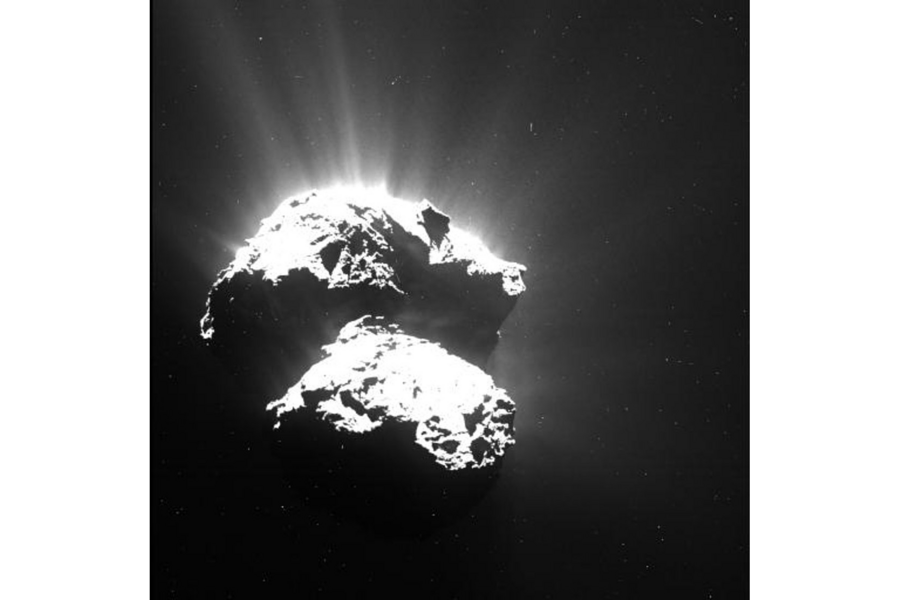Comet-orbiting Rosetta probe to go out with a crash and a bang
Loading...
The Rosetta spacecraft has a complicated but potentially hugely scientifically rewarding summer ahead of it before its grand finale: a crash landing on Comet 67P/Churyumov–Gerasimenko.
The European Space Agency announced September 30 as the termination date of the probe after its 12 years of hurtling through space. Rosetta will join its sidekick, Philae, whose gentle landing on the comet made it possible for the lander to take the first-ever photos from the surface of a comet.
But Rosetta’s final opportunities to send back data will occur before, not after, it makes contact with the icy body, and scientists hope to make the most of the approach, despite the significant challenges.
Planning for the final mission comes as Rosetta is reaching the end of its natural life. It’s on a trajectory to travel farther from the sun than it ever before, as it follows the comet out beyond the orbit of Jupiter. But because the craft and its instruments depend on solar power, it has to either shut off some of its instruments or enter hibernation without sufficient sunlight. Though the craft had previously entered a 31-month hibernation while waiting to re-approach the sun, as the spacecraft ages and is also running out of fuel, chances are diminished that it could return valuable data after being reawakened. The increased distance with Earth also reduces data download capacity.
“Planning this phase is in fact far more complex than it was for Philae’s landing,” says Sylvain Lodiot, ESA Rosetta spacecraft operations manager in a statement. “The last six weeks will be particularly challenging as we fly eccentric orbits around the comet – in many ways this will be even riskier than the final descent itself."
In August, Rosetta will make a series of elliptical orbits that will take it progressively closer to the comet, requiring controllers on Earth to make advanced maneuvers to control the spacecraft’s trajectory amid the increased influence of the comet’s non-uniform gravity.
Rosetta’s two years traveling alongside the comet have helped scientists become acquainted to the challenges of operating a probe in the dusty environment. Last month, the spacecraft mistakenly switched into “safe mode” when dust confused the navigation system, an error that was later corrected and that scientists hope to avoid in the coming months.
“This is the ultimate challenge for our teams and for our spacecraft, and it will be a very fitting way to end the incredible and successful Rosetta mission,” said Patrick Martin, ESA Rosetta’s mission manager, in a statement.
The specific location of the impact site is still under discussion but it will definitely be Rosetta's final resting place: Rosetta’s instruments and transmitter will be switched off upon impact, in keeping with spacecraft disposal requirements.








